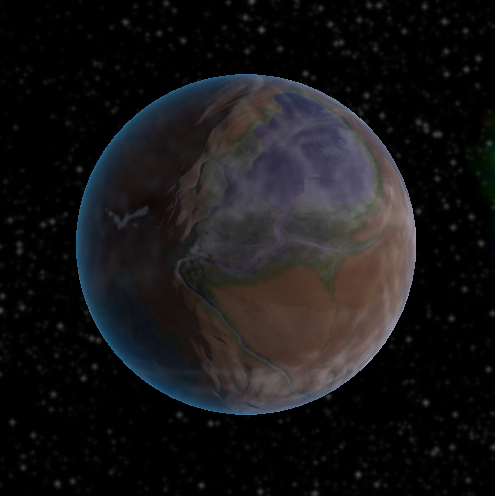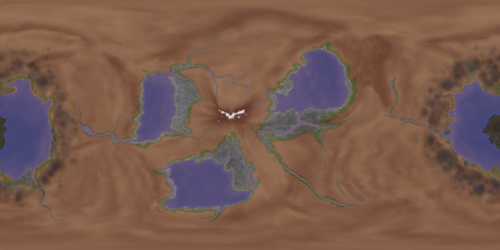Ranul
The inner moon of the third planet from the center.
Geography
Ranul is the inner satellite of the planet Kasavoa. They are in tidal lock, meaning that Ranul is always facing Kasavoa in the same direction.
The moon is mostly covered with sand. Three medium-sized seas are found on its inner face, and numerous rivers and oases allow life to exist in the deserts between them. The outer face is marked by a large sea covering most of it. In the center of that sea lies a volcanic island.
Ecosystem Cycles
Ranul's average temperature ranges from -5°C to 57°C depending on Kasavoa's orbital position.
The outer face can reach temperatures up to 110°C when it is closest to the Kaleidoscope and become as cold as -45°C when it is furthest away. In contrast, the inner face has a temperature range between about -5°C in winter and up to 34°C in summer.
Fauna & Flora
Succulents and cacti are widespread on Ranul, making the best use of what little rain falls. Leafy plants can be found as well, but only close to bodies of water. Wildlife consists mostly of reptiles, large insects, fish and crustaceans.
Natural Resources
Ranul is rich in silicon, iron and aluminium.
There are plants which produce wood and others that are edible, while various animals can be kept as lifestock.
Furthermore, energy from both the Kaleidoscope and the star can be harvested by Rilsu technology.
Alternative Name(s)
Lynvia, The Sandy Moon
Type
Planetoid / Moon
Included Locations
Related Ethnicities





Comments